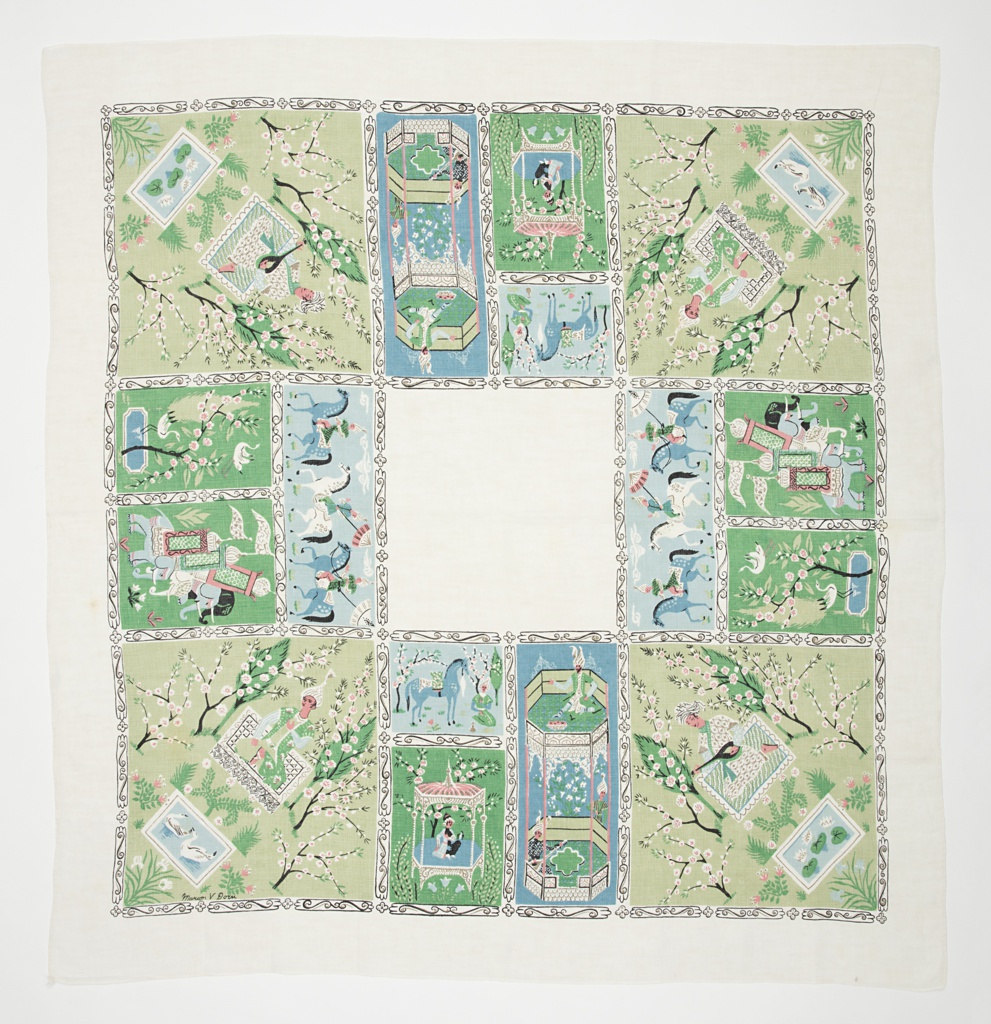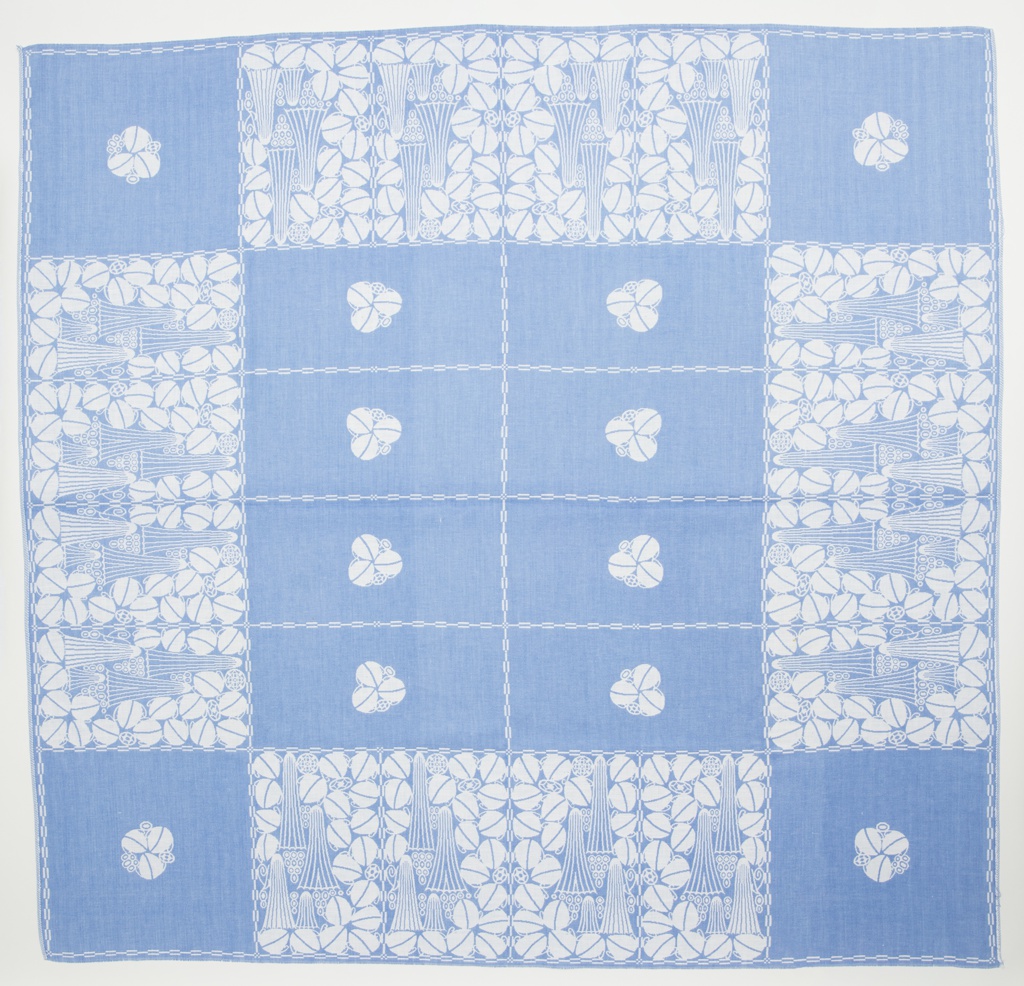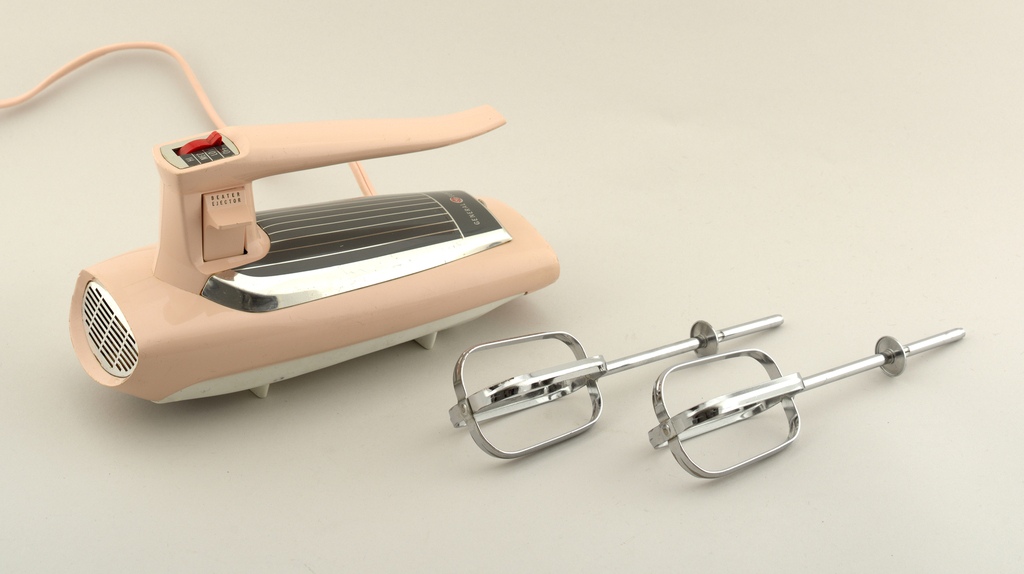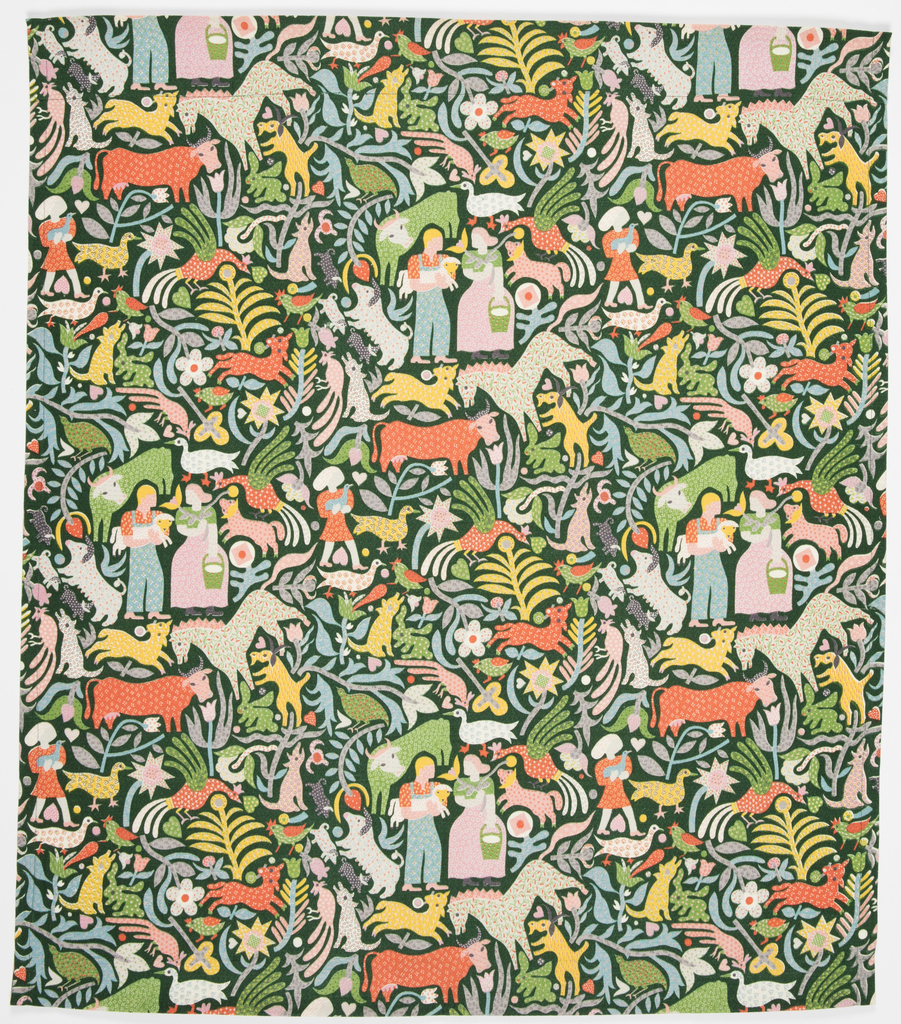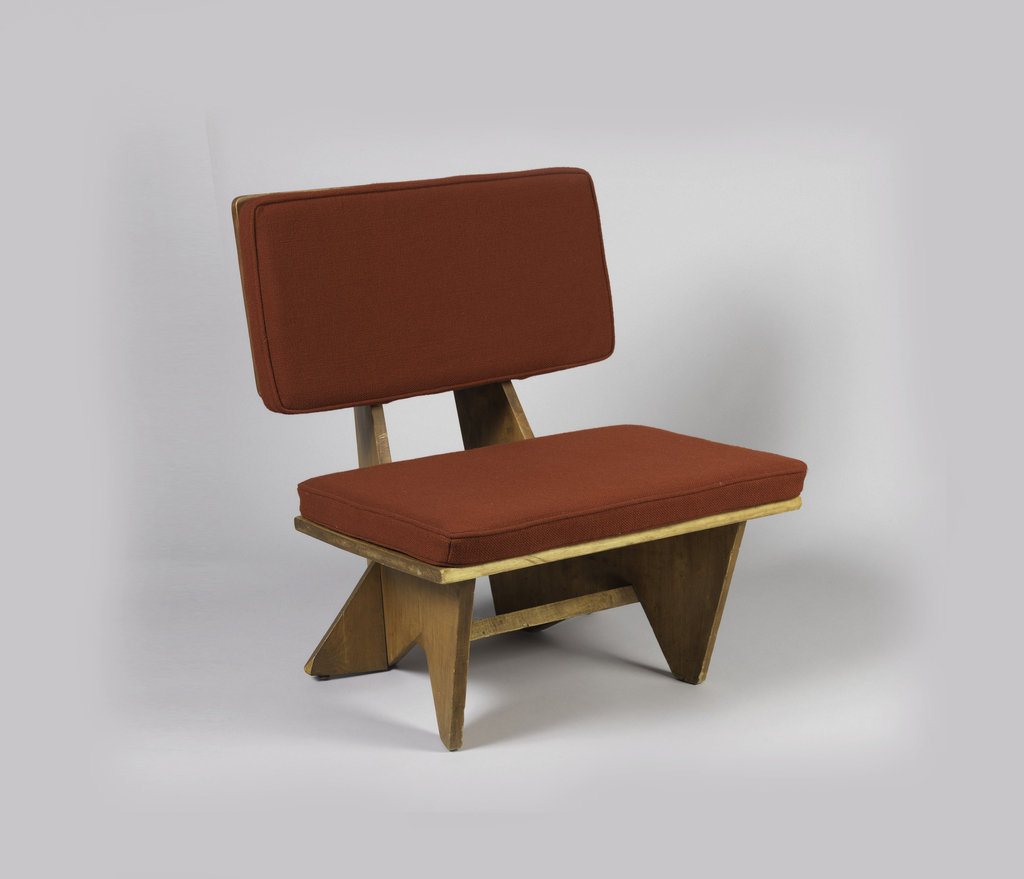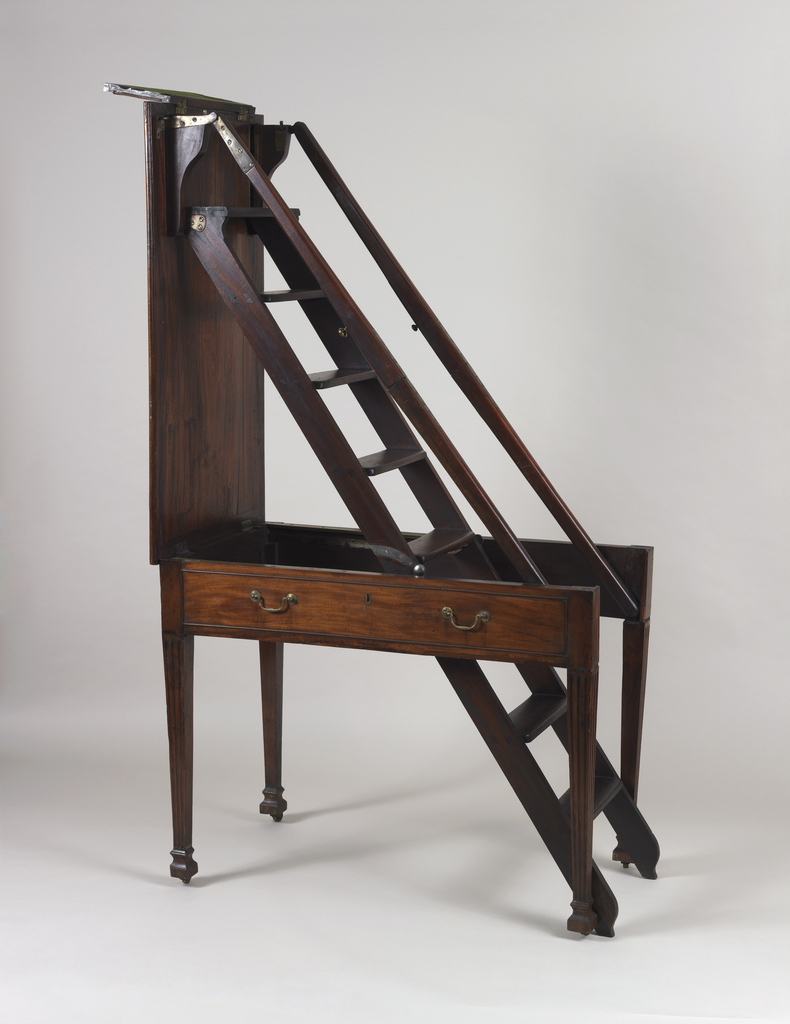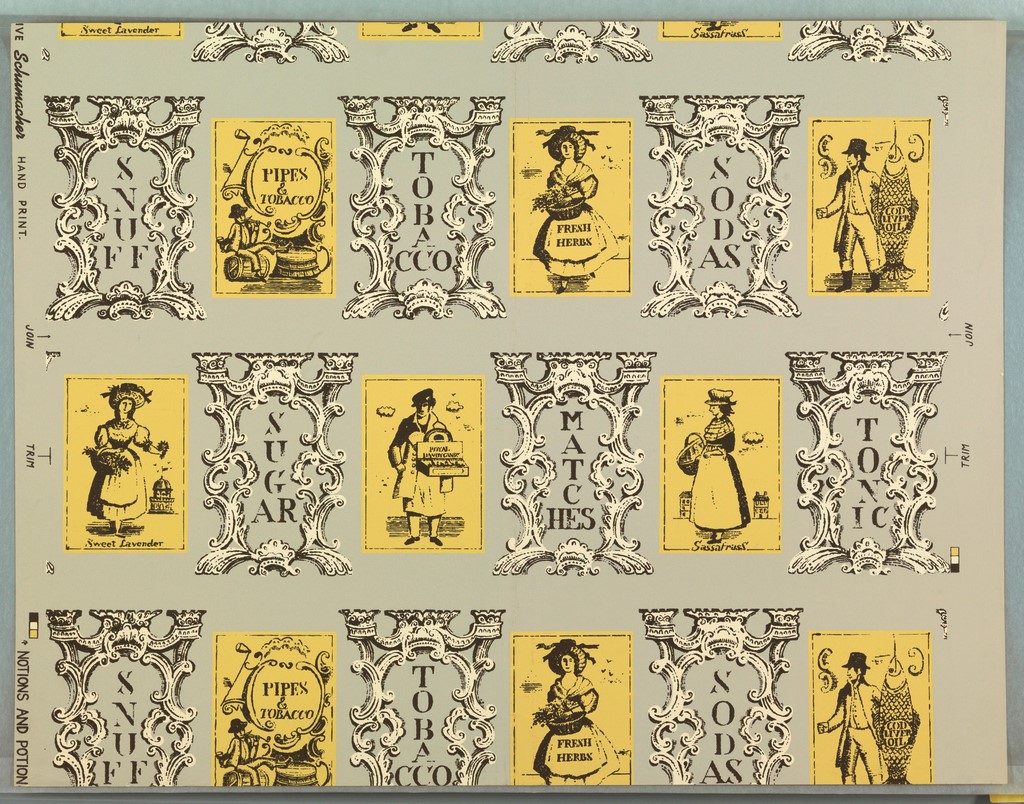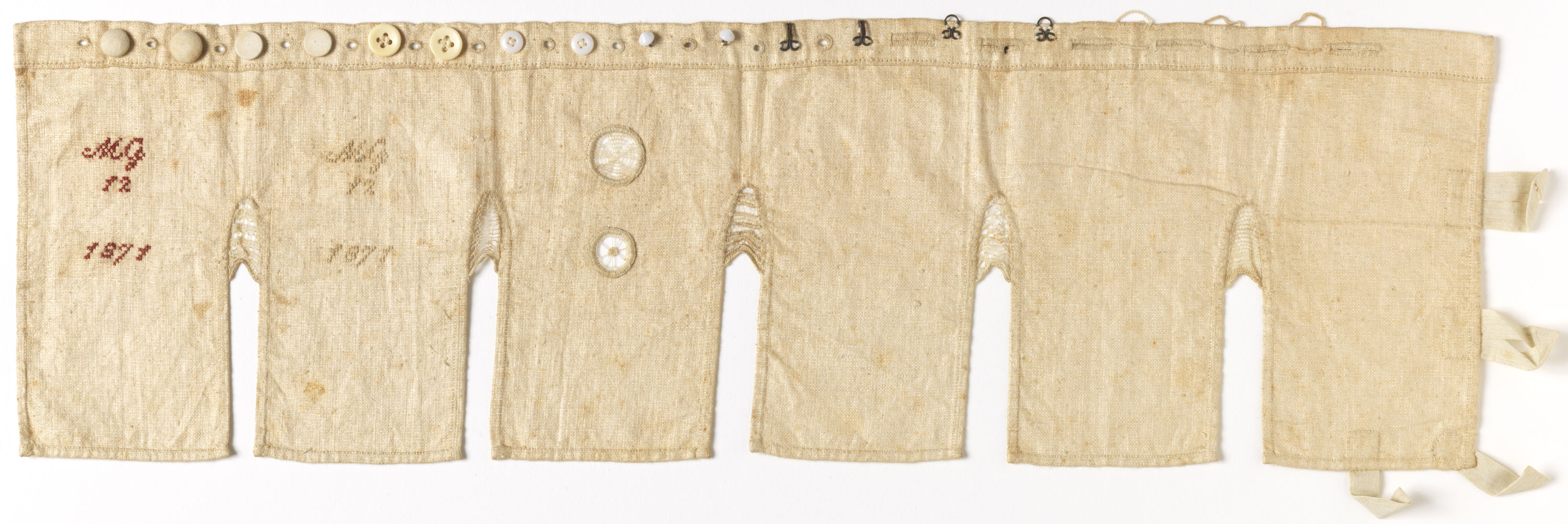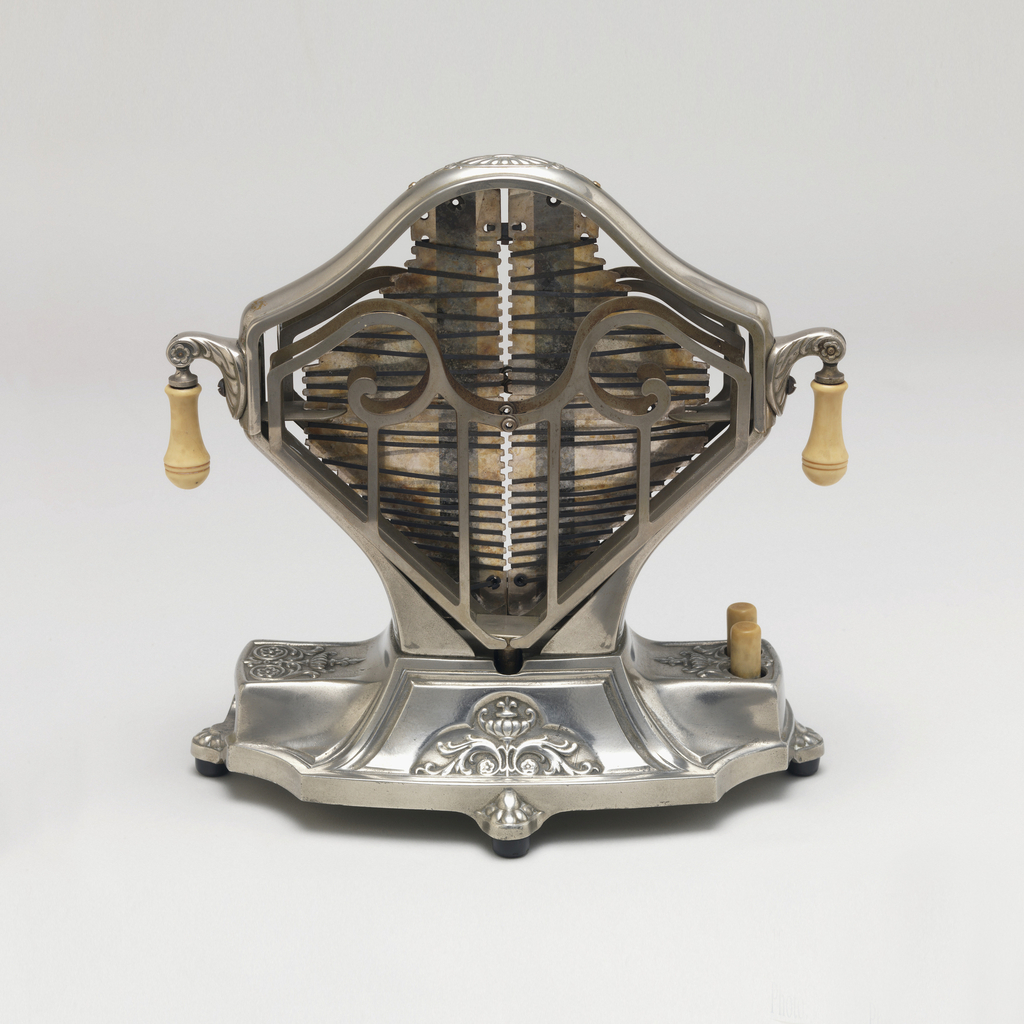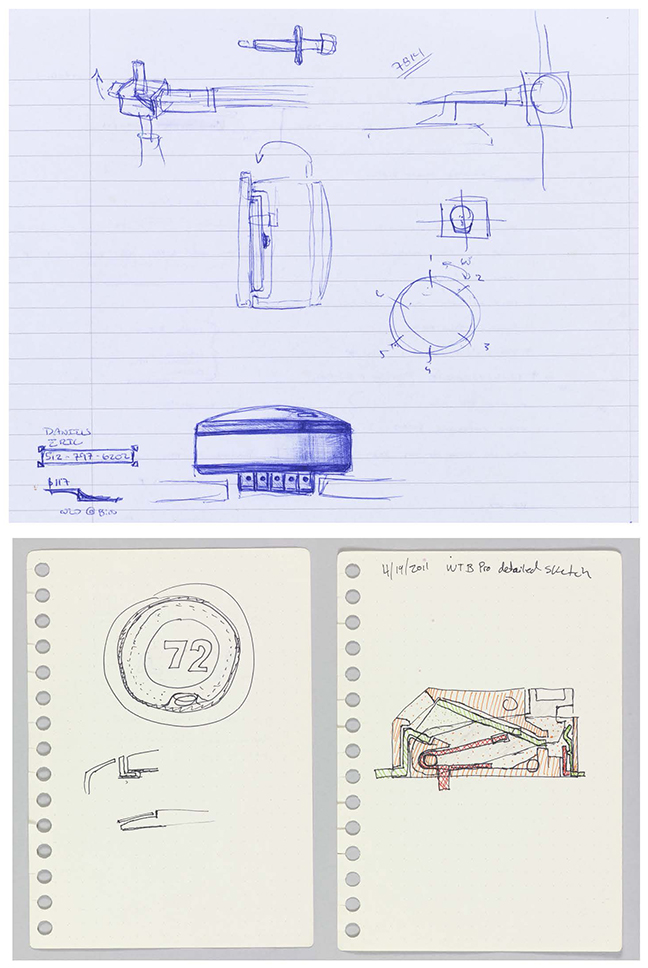This colorful tablecloth was designed by Marion Dorn Kauffer, an accomplished twentieth-century designer primarily known for her textiles and carpets. Designing across different media, she also created wallpapers, illustrations, and graphics. The printed pattern that decorates this tablecloth features a series of square and rectangular vignettes inspired by Mughal painted miniatures from India. The vignettes...
Josef Zotti (b. Italy, active Vienna, 1882–1953), Austrian architect and furniture designer, collaborated with Herrburger und Rhomberg, one of the largest textile companies in Vorarlberg, Austria. The partnership began after the completion of his studies and extended until the 1930s. The earliest works were woven fabrics, particularly tablecloths, decorated with graphic motifs that were characteristic...
In 1955 General Electric released a line of kitchen appliances available in what they called “mix-and-match colors.” From canary yellow dishwashers to cadet blue refrigerators, one could construct an entire kitchen with G.E.’s colorful products. A two-page spread in Better Homes and Gardens from 1956 explained how one could entirely modernize his or her kitchen...
This Object of the Day celebrates one of many treasured objects given by Clare and Eugene V. Thaw to Cooper Hewitt, Smithsonian Design Museum. It is published here in memory of Eugene V. Thaw. Click on this link to read more about the Thaws and their gifts to Cooper Hewitt. The popularity of boldly-decorated faience must be...
The issue of The New Yorker dated August 19, 1944 had a curiously wholesome cover. A farmer, holding a lamb, and his wife, armed with a bucket, were surrounded by farm animals and flowers. They were faceless and a bit flat, but expressive nonetheless, with the appearance of having been cut from bright calico cottons...
Sandy Chilewich has popularized and boosted the reputation of extruded yarn manufacture, specifically in vinyl, which used to be reserved for more industrial applications. She took advantage of a fairly simple mechanical process involving relatively few steps to make much of the woven vinyl products that are part of her eponymous line. The extrusion process...
This chair is believed to have come from the Robert D. Winn House in Kalamazoo, Michigan, one of Frank Lloyd Wright’s Usonian homes— affordable housing designed for middle-class families. The architect used the adjective “usonian” to describe the unique character of the American landscape. Usonian furniture designs were simple and intended to be made on-site...
This cleverly designed library table conceals a nearly six-foot ladder, whose steps may be put up or taken down in mere seconds. It was built after designs published in 1793 by the London cabinet maker Thomas Sheraton, who in turn was inspired by a piece made by Robert Campbell for the private library of Prince...
This paper features a delightful cast of characters. Various street salesmen, framed as if on postcards or playing cards, sell goods as varied as lavender, sassafras, and cod liver oil. In between them Neo-Rococo frames surround names of further goods such as “Tobacco”, “Sugar”, and “Tonic.” Though this paper is from the 1950s, one could...
Decorative embroidered samplers were made by daughters of the well-to-do for display in their homes, and were symbols of gentility as much as of skill. For daughters of the poor, instruction in needlework, while equally important, often had a more practical purpose: to prepare them for work as domestic servants. Going into service for a...
Landers Frary & Clark was one of the first American companies to manufacture electrical home appliances: in 1908 they introduced an electric coffee percolator and 1912 saw the release of an electric iron. These new products added to the company’s line of household products that they had marketed since the 1890s under the trade name...
At once casual and precise, these preparatory drawings by Eric Daniels (top) and John Benjamin Filson (bottom) reveal the task of integrating complex components into a unit that sits seamlessly against the wall. The Nest Learning Thermostat brings advanced interaction design to a basic home device. The rotating interface recalls the classic design of Henry...
Ingo Maurer and his extraordinary team of designers and technicians have managed to dramatically transform the second floor of the Carnegie Mansion into a fiesta of lights and objects. But Maurer uses a sensitive touch while maintaining the original character of this grand domestic space. If anything, he has made it even more intimate and...
